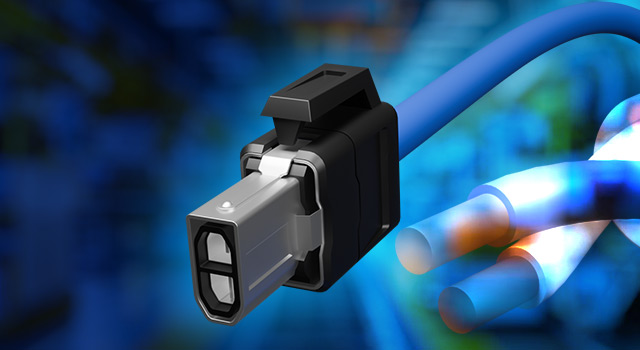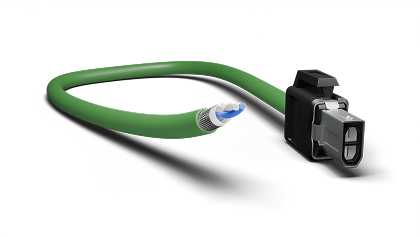

SIGNALS+ NEWSLETTER SUBSCRIPTION
Stay updated and leverage Signals+ latest insights, information and ideas on Connectivity, Digital Health, Electrification, and Smart Industry.
Thank you for subscribing to ADI Signals+. A confirmation email has been sent to your inbox.
You'll soon receive timely updates on all the breakthrough technologies impacting human lives across the globe. Enjoy!
CloseSINGLE-PAIR ETHERNET REVOLUTION: ENGINEERING WITH PURPOSE, INNOVATING FOR IMPACT
For more than a century—stretching back to the Morse code era in the mid-1800s—single-pair wiring has quietly powered communications across industries. From simple signaling systems to advanced data transmission, this medium has proven both resilient and adaptable.
Today, its relevance has only deepened. With the rise of software-defined vehicles (SDV), smart infrastructure, and energy-conscious design, single-pair connectivity is poised to shape the next century of innovation.
UBIQUITY MEETS INGENUITY
Whether it’s a doorbell, an HVAC system, or a fire safety network in a skyscraper, single-pair wiring is embedded in our built environment. Even modern cars depend on it, connecting everything from immersive infotainment to advanced driver assistance systems (ADAS).
Existing copper infrastructure is more than just legacy; it’s an opportunity. By rethinking how we utilize it, we can reduce installation complexity, unlock higher bandwidth, and help to lower future environmental impact by minimizing new copper mining and material waste due to significant re-use of existing installed wiring.
ENGINEERING FOR REAL-WORLD PERFORMANCE
Unfortunately, as applications scale, so do technical challenges. Transmitting data reliably over a single twisted pair demands deep consideration:
- Are cabling terminations optimized to reduce electrical reflections?
- What modulation schemes preserve low error rates?
- How do we address EMC concerns to prevent system interference?
- Are network topologies architected for future-proof scalability?
These are critical decisions that shape performance and user experience. Standards ensure safety and interoperability, but solutions must also anticipate future needs.


- System Topology: Point to Point / Multi-Drop
- Cost of Ownership: Installation cost, cable cost
- Uplink/Downlink Speed: Symmetric / Asymmetric
- Full/Half Duplex: Echo Cancellation
- Latency: Real time networking
- Distance: Range
- Standards based vs Proprietary: Market adoption
- Resiliency: Link Diagnostics




DRIVING THE FUTURE: SINGLE PAIR IN AUTOMOTIVE NETWORKS
Modern vehicles have embraced single-pair communication to simplify wiring, reduce weight, and enable real-time data transfer. Diverse technologies deployed over a single twisted pair include:
- A2B™ (Up to 50 Mbps): Audio, infotainment
- 100BASE-T1 (100 Mbps): Infotainment, cameras, and ECUs
- 1000BASE-T1 (1 Gbps): High resolution sensors, ADAS
- E2B/10BASE-T1S (10 Mbps): Low speed sensors, zonal architectures
- GMSL™ (Up to 12 Gbps): Infotainment, camera systems
- CAN (Up to 8 Mbps): ECU networking
These protocols, both proprietary and standards-based, coalesce to form robust and scalable in-vehicle networks that prioritize safety, reliability, and efficiency. The benefits extend beyond performance to include lighter harnesses, reducing vehicle weight, improving fuel economy, and enhancing design flexibility.
THE SMART BACKBONE OF TOMORROW’S FACTORY AUTOMATION
In today’s era of smart manufacturing, connectivity isn’t just about linking devices. It’s about enabling intelligence and agility. Single-pair communication is quietly reshaping factory operations to become a key driver of industrial transformation.
FROM LEGACY WIRING TO INTELLIGENT NETWORKS
Traditionally, factory floors relied on bulky wiring systems and layered protocols to interconnect sensors, controllers, and machinery. These systems were often expensive to install and maintain, with limited flexibility for upgrades.
Enter single-pair Ethernet (SPE)—a compact, cost-effective solution that delivers robust data transmission over a single twisted pair of wires. SPE’s minimalistic approach isn’t just a reduction in materials; it’s a strategic rethinking of how networks scale in industrial environments, including:
- Smaller, lighter cables are easier to install, especially in tight or moving assemblies
- Reduced costs for material and labor
- Faster commissioning and streamlined diagnostics
- Potentially improved energy efficiency
BRIDGING IT AND OT
One of the most significant impacts of single-pair communication is its ability to bridge information technology (IT) and operational technology (OT). By enabling Ethernet connectivity at the edge—down to the smallest sensor—SPE helps unify protocols and infrastructures across layers. Factories that integrate SPE into their automation systems benefit from:
- Real-time data visibility from field devices to enterprise platforms
- Predictive maintenance powered by granular, timely insights
- Adaptive manufacturing, where equipment responds dynamically to demand
- Data provenance, in IP-based systems, data can be certified at the source, ensuring it originates from a secure, verified device.
This convergence is what drives Industry 4.0, and single-pair connectivity is making it achievable at scale.
BUILT FOR HARSH REALITIES
Factory environments are noisy, dirty, and unforgiving, and their communication systems must endure electrical interference, temperature swings, mechanical wear, and tight tolerances. Single-pair systems address these challenges, offering EMC resistance for reliable data transfer, robust connectors for industrial-grade resilience, and long-distance support, ideal for sprawling facilities.
Standards like IEEE 802.3cg (10BASE-T1L) enable long-range SPE over 1,000 meters, bringing Ethernet access to places that were previously unreachable.
THE FUTURE IS LEAN, CONNECTED, AND INTELLIGENT
Single-pair communication is more than just a clever wiring solution. It’s a strategic enabler of smart, scalable, and sustainable automation. Single-pair simplifies networks, enhances performance, and creates real-time responsiveness on the factory floor. As industrial leaders seek ways to do more with less, single-pair technologies provide a path forward—driving smarter, leaner, and more intelligent factories from the core.





 Close Details
Close Details


